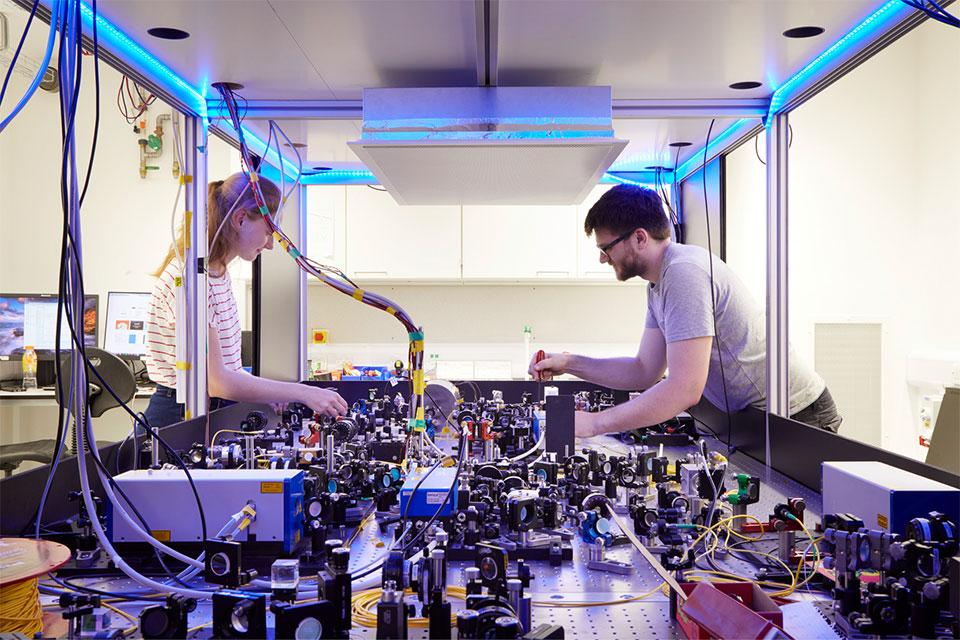Beecroft Building
Dr Diana Craik, ETH Zurich
Abstract:
I will present recent results of a search for a new force between the neutron and the electron. This search is performed using isotope-shift
(IS) spectroscopy in calcium ions. IS spectroscopy of atoms and ions has been proposed as a method to search for a fifth fundamental force mediated by a hypothetical dark-matter-candidate boson in the intermediate mass range (100eV to 10MeV). The existence of this new force would cause neutron-number-dependent (and hence, isotope dependent) shifts in atomic transition frequencies. To distinguish these shifts from standard model (SM) shifts (relating, for example, to small changes in the Coulomb potential of the nucleus between isotopes), one measures isotopes shifts on at least two transitions between three or more distinct pairs of isotopes. The data can then be plotted on a "King plot", which displays a nonlinearity if physics beyond first-order SM effects has contributed to the measured isotope shifts.
Using an entanglement-enhanced technique to reject common-mode noise, we measure isotope shifts on the 729-nm electric quadrupole transition between pairs of co-trapped calcium ions at 100mHz precision, two orders of magnitude below the previous best measurement. We combine our measurements with IS measurements made by the group of Piet Schmidt on the 570nm transition in Ca14+, and improved nuclear mass measurements made by the group of Klaus Blaum, to produce the first sub-Hz King plot.
King plots in calcium had previously remained linear up to the 10Hz level -- our improved precision now reveals a large King non-linearity.
Whilst the second-order mass shift is an expected SM source of nonlinearity, a decomposition analysis of the nonlinearity pattern we observe reveals evidence for at least one other contributing source. In this talk I will discuss the implications of these results both to our understanding of nuclear structure and to the search for new physics.

